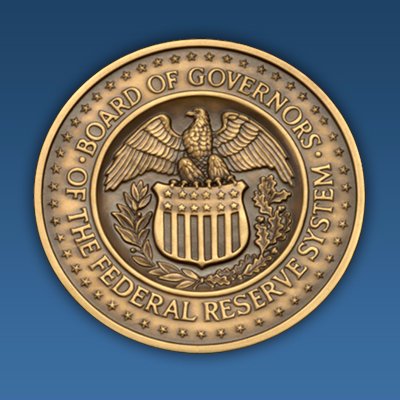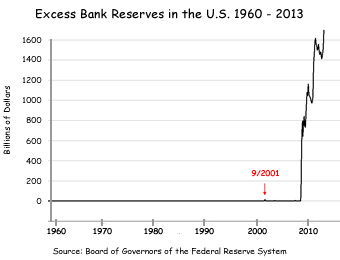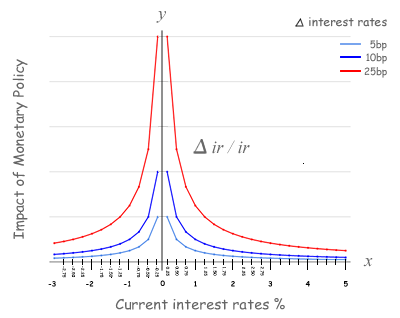
|
 Monetary Policy in the 21st Century
Monetary Policy in the 21st Century
Contributor(s): Peter del Rio
Last Edited: 2016-10-08
September 17, 2016
|
|
In the 21st Century, central banks are battling deflation coming from global competition for good jobs, increased productivity from technology and the lack of demand for capital.
The isolated domestic economic models used in the 19th and 20th century are no longer relevant in a global economy.
In a competitive global marketplace full employment is no longer inflationary, as there is always someone willing to do the job cheaper.
Up until 2009, excess bank reserves -
and when excess bank reserves are in equilibrium at 0, the inflationary pressure comes from the demand for cash .
|
|
Ever since 2009, excess bank reserves, cash have been in dis-equilibrium with oversupply due to lack of demand.
The oversupply on cash causes the
Natural Equilibrium of Interest Rates for cash to become 0%.
When supply and demand for cash are in equilibrium at 0, short term interest rates rise to the implied inflation rate for the demand for cash.
The Federal Reserve is most effective at influencing short term interest rates when excess bank reserves are in equilibrium at 0.
|

|
|
|
The Impact of Monetary Policy,
the change of fed funds divided by fed funds (ΔFF/FF) is non-linear and parabolic at 0%,
a small move in fed funds when rates are near-zero has a large impact.
In short, the impact of a 5 basis point move near-zero is equivalent to a 25 basis point move when interest rates are at 1.25%
and two times more impactful than when interest rates are at 3%.
This enables the Federal Reserve to micro-adjust monetary policy, and at 0%, the Federal Reserve is most effective at supporting the U.S. economy
when there is an over supply of excess bank reserves.
Not until there is an equilibrium again at 0 between supply and demand for excess bank reserves will we see inflationary pressures.
Once excess bank reserves are at 0, the natural equilibrium of interest rates will cause fed funds to rise and combat inflation.
|

|
|



